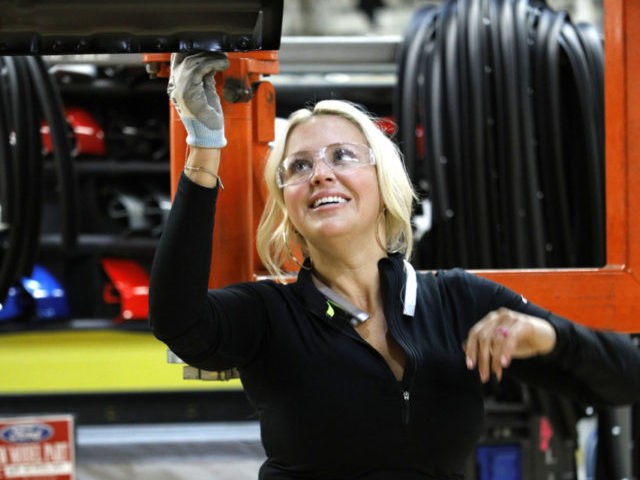Manufacturing activity exploded higher in March, fueled by strong growth in new orders, the clearest sign that the economy was ready to boom prior to the stimulus package passed last month and may now be at risk of overheating.
The Institute for Supply Management (ISM) said on Thursday that its index of national factory activity jumped to a reading of 64.7 last month from 60.8 in February. That was the best reading since December 1983.
Economists had forecast a more moderate increase to 61.5. In fact, the reading was above the top of the range of economists surveyed by Econoday.
Any reading above 50 in the ISM index indicates expansion in manufacturing.
Economic data indicates that President Donald Trump left the country with a far stronger economy than was thought. Economic growth has accelerated earlier than forecast by Wall Street or Federal Reserve economists, many of whom thought the economy would be sluggish early in the year and then pick up in the second or third quarters. A well-executed vaccination roll-out, in accordance with the strategy laid out by the Trump administration, and earlier than expected economic reopenings—pushed particularly by Republican governors—are also contributing to the growth.
The Biden White House’s massive $1.9 trillion pandemic relief package was formulated on the inaccurate expectation that the economy was still struggling. With the bulk of the spending yet to hit the private sector, it now risks overheating the economy.
The third round of relief deposits, this time for $1,400 per qualified person, went out last month. But much of that money was likely saved by households rather than immediately spent. Even before those checks went out, households had built up around $19 trillion in excess savings. Combined with the latest round of stimulus, that could cause a surge in spending this spring and summer, likely pushing up prices.
The Fed has said that it expects any increase in prices to be temporary and not result in sustained inflation. Fed chair Jerome Powell has said the Fed will keep its interest rate target low even if prices move up this year.
Prices of raw materials are moving up but the pace of price gains slowed in March, an indication that higher inflation remains a risk but not a reality.
“A lack of qualified machine and fabrication shop talent makes it difficult to keep up with production demands when there is no backup (second string),” a fabricated metals executive told ISM. “Qualified new hires are an ongoing challenge. We have had to provide better compensation to keep qualified talent. Raw-material prices are up 50 percent to 60 percent over the last six months, which results in increased prices to our customers and a disincentive to build inventory.”
The new orders, production, and employment indexes moved up sharply. This supports expectations for huge job gains when the U.S. government issues its March employment report Friday.
Demand is so strong that manufacturers are struggling with supply shortages and having trouble finding enough workers. The cold snap in February also contributed to ongoing shortages in many industries.
“The manufacturing economy continued its recovery in March,” said Timothy R. Fiore, chairman of the survey. “However, Survey Committee Members reported that their companies and suppliers continue to struggle to meet increasing rates of demand due to coronavirus (COVID-19) impacts limiting availability of parts and materials. Extended lead times, wide-scale shortages of critical basic materials, rising commodities prices and difficulties in transporting products are affecting all segments of the manufacturing economy. Worker absenteeism, short-term shutdowns due to part shortages, and difficulties in filling open positions continue to be issues that limit manufacturing-growth potential.”

COMMENTS
Please let us know if you're having issues with commenting.